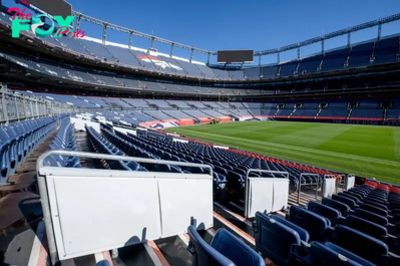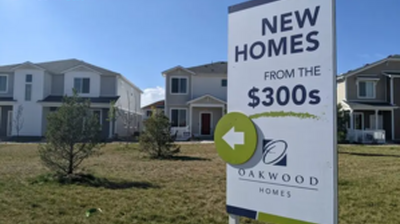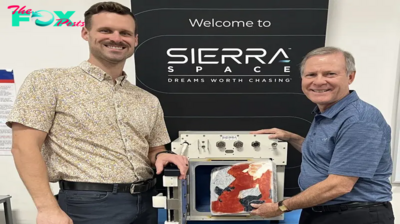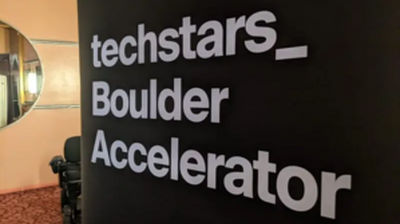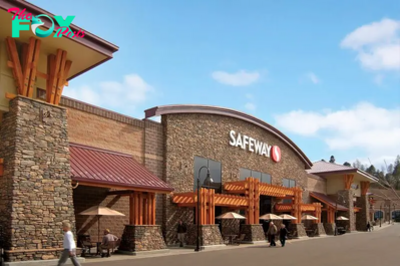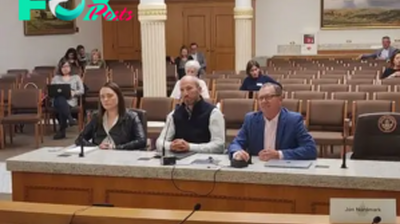Technology
Colorado’s ham radio operators are ready for an emergency — just don’t call them amateurs
Story first appeared in:

JEFFERSON — In a craggy meadow of granite and sagebrush, Willem Schreüder climbs into the camper trailer that he’s transformed into a space-age command center. Towers of computer equipment blink and whir. He taps on a laptop, scrolling through 239 fixed and mobile radio relay sites across the Rocky Mountains, showing off customized software that can remotely control and repair remote radio signal transmitters.
“A lot of what we do is backup for public safety and even though we are volunteers, we take our work very seriously,” said Schreüder, a long-bearded professor of computer science at the University of Colorado who has been involved with amateur radio for more than 40 years. “Really we are amateurs in name only.”
There is nothing amateur about the gathering in the remote corner of South Park. Part of the National Association for Amateur Radio’s annual Field Day — a nationwide rally of licensed ham radio hobbyists that started in 1933 — the circled collection of high-tech camper trailers and vans is bustling with technical wizards training for that day when they are called into service.
It could be a tornado, flood, hailstorm or wildfire. Maybe an earthquake or solar storm has knocked out satellite communication. Maybe rural emergency service folks need help with a big event, like a mountain bike or running race. Whatever the reason, there are 19,629 licensed amateur radio operators in Colorado — almost 750,000 in the U.S. — who are trained and ready to keep critical communications flowing.
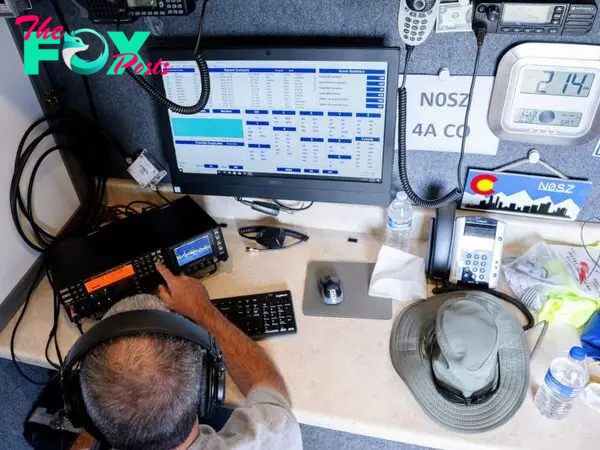
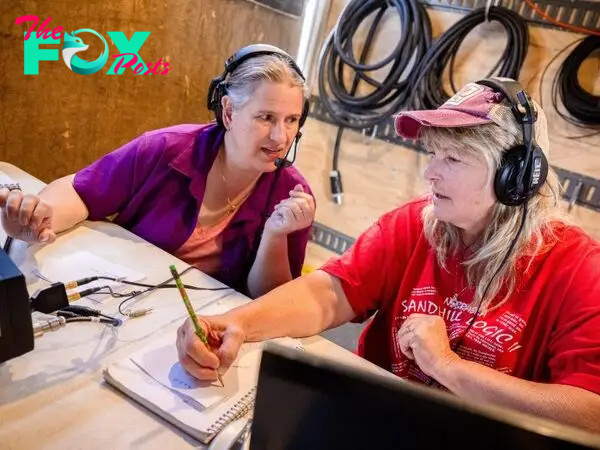
LEFT: Amateur radio operator Mike Gurski, call sign K0GUR, of Denver, participates in Rocky Mountain Ham Radio’s annual encampment during the Amateur Radio Relay League’s annual Field Day on June 22, 2024, in Jefferson. RIGHT: Amateur radio operators Dana Kephart, left, and Stacey Taylor, right, of Firestone, team up for a Field Day session. (Andy Colwell, Special to The Colorado Sun)
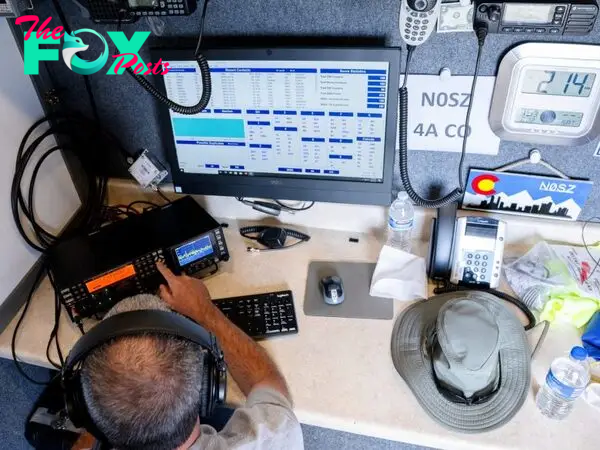
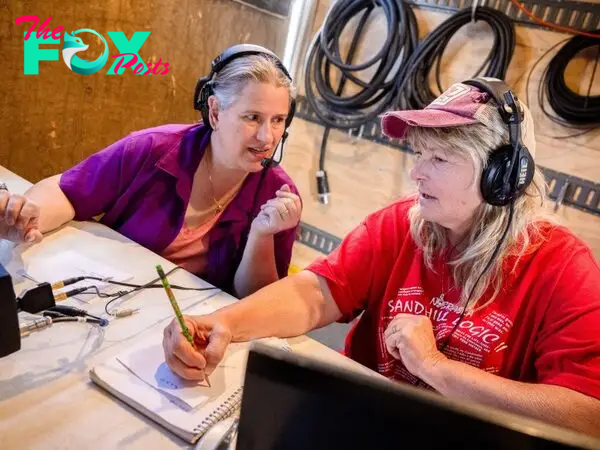
TOP: Amateur radio operator Mike Gurski, call sign K0GUR, of Denver, participates in Rocky Mountain Ham Radio’s annual encampment during the Amateur Radio Relay League’s annual Field Day on June 22, 2024, in Jefferson. BOTTOM: Amateur radio operators Dana Kephart, left, and Stacey Taylor, right, of Firestone, team up for a Field Day session. (Andy Colwell, Special to The Colorado Sun)
“For most amateur radio groups, it’s about serving our communities,” said Desiree Baccus — call sign N3DEZ — with the Rocky Mountain HAM Radio club, a nonprofit that maintains a network of radio-transmitting equipment across Colorado, New Mexico and Wyoming. “There is only so much local sheriffs can do in small towns and you will see amateur radio operators stepping in to fill the gaps as volunteers to help as a second service to our emergency management professionals.”

This story first appeared in
Colorado Sunday, a premium magazine newsletter for members.
Experience the best in Colorado news at a slower pace, with thoughtful articles, unique adventures and a reading list that’s a perfect fit for a Sunday morning.
Rocky Mountain HAM can provide sheriff’s deputies and emergency personnel with more than a couple hundred handheld devices and mobile repeaters that relay communications using radio waves, not satellites. The group, with its network of microwave repeaters and relay stations set up across the Rocky Mountains, has helped the U.S. Forest Service, Federal Emergency Management Administration and the Colorado Division of Homeland Security and Emergency Management.
About 100 licensed amateur radio operators in Colorado are part of Colorado Auxiliary Communications, a disaster response public safety communications network of volunteers trained to support the state’s Office of Emergency Management. Clubs like Rocky Mountain HAM also are credentialed by FEMA. The auxiliary team — they are called AUXCOMM — receives specialized training and was assembled about five years ago. The volunteers help the state’s emergency responders set up radio networks, remote satellite internet connections and off-grid power supplies during crises.
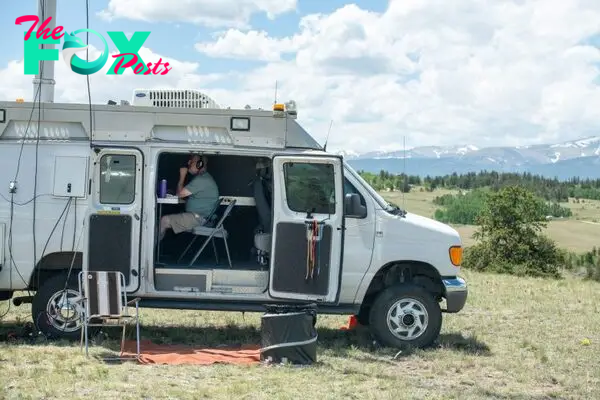
The radio operators have helped set up communications to assist with state response to floods in Hinsdale County and wildfires across the state. Most recently the AUXCOMM team helped establish remote monitoring systems so state regulators could better track and mitigate the spread of avian influenza in rural parts of the state.
Kevin Klein, the director of the Colorado Division of Homeland Security and Emergency Management, remembers when the September 2013 flood in Colorado’s Front Range wiped out fiber network communications and “the only thing we were getting was coming from ham radio operators.”
The support during the floods helped set the stage for a more organized group of volunteers who became the Colorado AUXCOMM organization.
“These folks have the knowledge and expertise to really assist us in a lot of ways,” Klein said. “For me, their enthusiasm for service is the really cool part.”
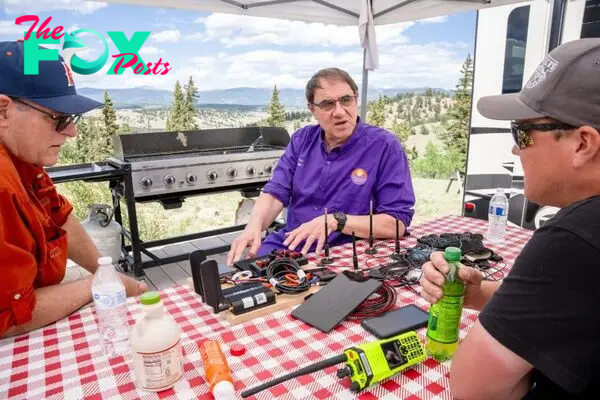
What happens at the 24-hour Field Day
In the breezy field about 20 miles from Fairplay, the Rocky Mountain HAM Radio members bustled through the 24-hour Field Day. A solar-powered trailer bunkhouse housed six people sleeping in shifts so they could keep the airwaves cackling day and night. Retrofitted toy hauler trailers were wedged with wires and electronics powered by solar panels and backed up by diesel generators. A communal kitchen kept food flowing for the radio users, many of whom arrive early and stay late around the national Field Day, making it more of a field week.
The Field Day participants collected points for contacts, part of a gaming component of amateur radio that keeps the dial-twisting, head-phoned users sharp and ready. At the top of every hour, amateur radio operators around the country tune into a single, certain band and listen for any emergency SOS call. They call that wilderness protocol. Rocky Mountain HAM also offers online classes and seminars helping folks learn how to be more efficient at transmitting voice and data over radio waves.
A fleet of retired news satellite vans — the ham people call them Quick Response Vehicles — anchored telescoping dishes that once connected roaming television reporters to their studios. In one of those vans, Doug Sharp — who has the highest level of licensing: Amateur Extra — huddled over a control panel, tapping out Morse code and interpreting incoming messages. Morse code transmissions — using Continuous Wave radio frequency — were the first types of wireless communication that established radio communication in the 19th century as an option beyond wired telegraphy.

65 words per minute
— How fast Doug Sharp can send messages in Morse code
The Morse code transmissions are still important ways to speedily communicate essential information in an emergency, and Sharp, the head of technology for Rocky Mountain HAM, is a leading practitioner of the antiquated art, able to send and interpret 65 words a minute.
Sharp — K2AD— logged more than 1,000 contacts with Morse code during Field Day, up from 700 last year.
Radio operators have helped with evacuations around recent fires in California and Hawaii and helped support police radio transmissions in 2019 when a shooter opened fire at the annual garlic festival in Gilroy, California, with thousands of attendees.

There is no wrong way to do ham radio.
— Tristan Honscheid, amateur radio operator and software engineer
“It’s so cool when you think about how all amateur radio operators are volunteers, ready to step in and help at a moment’s notice,” said Tom Kephart — KC0GDM — from Firestone, who has been licensed since 1988. “These are people who really love this hobby and want to serve. And they are always trying to find ways to improve and serve better.”
Tristan Honscheid — NM0TH — a software engineer from Lafayette, once transmitted and received messages while skydiving several years ago as a student at MIT. He could reach people 80 miles away while he dangled beneath a canopy at 10,000 feet, he said.
-

 Technology13h ago
Technology13h agoBreaking up Google? What a Chrome sell-off could mean for the digital world | The Express Tribune
-

 Technology1d ago
Technology1d agoAI harm is often behind the scenes and builds over time – a legal scholar explains how the law can adapt to respond
-

 Technology1d ago
Technology1d agoNewborn planet found orbiting young star, defying planet formation timeline | The Express Tribune
-

 Technology1d ago
Technology1d agoAwkwardness can hit in any social situation – here are a philosopher’s 5 strategies to navigate it with grace
-

 Technology1d ago
Technology1d agoNo need to overload your cranberry sauce with sugar this holiday season − a food scientist explains how to cook with fewer added sweeteners
-

 Technology1d ago
Technology1d agoTeslas are deadliest road vehicles despite safety features: study | The Express Tribune
-

 Technology2d ago
Technology2d agoThere Is a Solution to AI’s Existential Risk Problem
-

 Technology2d ago
Technology2d agoUS pushes to break up Google, calls for Chrome sell-off in major antitrust move | The Express Tribune
